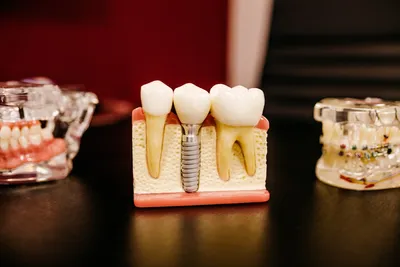
Understanding Gum Disease
Gum disease, also known as periodontal disease, is a common oral health issue that affects the tissues surrounding your teeth. It ranges from simple gum inflammation to serious disease that can result in major damage to the soft tissue and bone supporting the teeth. Recognizing the early signs and taking preventive measures is crucial to maintaining healthy gums.
Causes of Gum Disease
Gum disease primarily results from plaque buildup on your teeth. Plaque is a sticky film of bacteria that forms on the teeth when sugars and starches in food interact with bacteria normally found in the mouth. If not removed, plaque can harden into tartar, which further irritates and inflames your gums.
Risk Factors
- Poor oral hygiene
- Smoking or chewing tobacco
- Genetic predisposition
- Diabetes
- Certain medications
- Hormonal changes in women
Preventing Gum Disease
Prevention is always better than cure. Here are some effective ways to prevent gum disease:
Brush and Floss Regularly
Brush your teeth at least twice a day and floss daily to remove plaque from areas your toothbrush can’t reach. Consider using an electric toothbrush for a more thorough clean.
Use Mouthwash
Antimicrobial mouthwashes can help reduce plaque and prevent gingivitis. Rinse your mouth with mouthwash after brushing and flossing for added protection.
Regular Dental Check-Ups
Visit your dentist regularly for professional cleanings and check-ups. Early detection and treatment of gum disease can prevent its progression.
Quit Smoking
Smoking weakens your immune system, making it harder to fight off gum infections. Quitting smoking significantly reduces your risk of gum disease.
Treating Gum Disease
If you already have gum disease, early treatment can prevent further complications. Here are some treatment options:
Professional Cleaning
Your dentist may perform a deep cleaning, known as scaling and root planing, to remove tartar and smooth the root surfaces, helping gums reattach to the teeth.
Medications
Antibiotic gel, mouth rinses, or oral antibiotics may be used to control bacterial infection and inflammation.
Surgical Treatments
In advanced cases, surgical treatments such as flap surgery or bone and tissue grafts may be necessary to restore supportive structures around the teeth.
Maintaining Healthy Gums
To maintain healthy gums, follow your dentist’s recommendations and continue practicing good oral hygiene habits. Remember, healthy gums are a crucial part of your overall oral health, so take preventive measures seriously and seek timely treatment if necessary.
Popular Oral Health Articles
Explore the articles our readers find most helpful, ranging from basic dental care tips to advanced oral health topics.



Related Posts
View All
Exploring Natural Remedies for Oral Health


